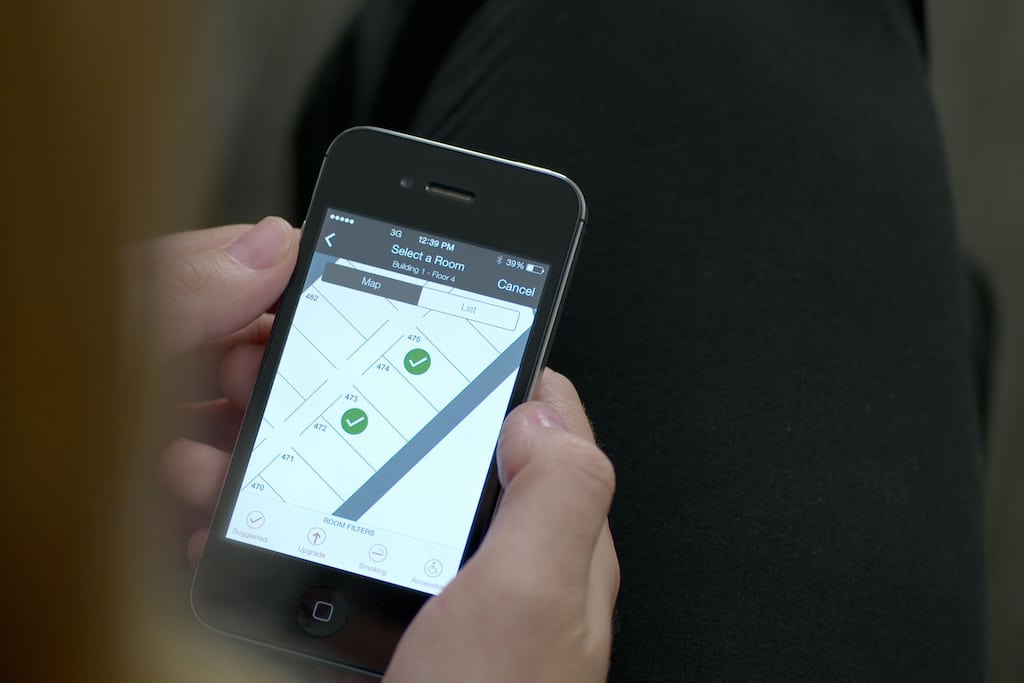
Have you ever wondered why it is you can’t, in most cases, book the exact hotel room you want? You know, the room that’s not near the elevator, but close enough to the ice machine (but not too close), and with views of the beach instead of the hotel parking lot.
We get to pick our own airline seats (even if we often wind up with the middle seat), so why is it that we can’t do the same with our hotel rooms?
This is something only one major hotel chain, Hilton Worldwide, and one hotel metasearch company, Room 77, which licensed its technology to Google two years ago, seemed to have figured out, to varying degrees.
A Tale of Two Apps/Sites
Using Hilton’s mobile app, Hilton HHonors loyalty members can pick the exact room they want to stay in via mobile check-in starting at 6 a.m. the day before their booked stay. The feature debuted in the summer of 2014 on its mobile app, and last week, Hilton announced that it teamed with Google Maps to give guests a better perspective as to what kind of views their rooms will have, and where they are in relation to the hotel’s surroundings. Rooms offered via digital check-in are available on a first-come, first-served basis.
However, as far back as 2011 or even further, Hilton had enabled its guests to choose their own rooms 36 hours or less before arrival on desktop. Back then, the feature excluded Hilton’s upscale Waldorf-Astoria and Conrad brands, and the company was still testing out the pick-your-own-room feature to see if the demand was there.
Since Hilton’s digital check-in with room selection launched on its app, that feature is now available at more than 4,500 Hilton Worldwide properties out of the company’s more than 4,660. Guests have used the feature more than 13 million times, and Joshua Sloser, Hilton Worldwide’s vice president of digital product innovation, estimates that one in four Hilton HHonors members is using the feature.
Sloser says that guest demand and the popularity of the feature prompted Hilton to reach out to Google to use its Google Maps application program interface (API). “Guests wanted more,” he said. “They told us they were toggling between the app and Google Maps to try to figure out where their room was. So we put the two together into one seamless experience.”
Before Hilton added specific room-booking to its mobile app, hotel metasearch startup Room 77 was already developing this kind of technology. Founded in 2009 and accumulating nearly $44 million in funding from the likes of Expedia and Concur, to name a few, Room 77’s hotel metasearch engine, which debuted in 2011, was designed to help customers find not only the best hotel at the best price, but to be able to pick the best room for their stay.
“I think we were early in the market, and ahead of the market in building out this kind of technology,” said Drew Patterson, CEO of Room 77 and its sister site, Check Mate. “With Hilton’s announcement, you can see this experience really coming to life.”
Like other booking sites, Room 77 struggled to gain a footing as it had to compete against companies such as Kayak, Google and TripAdvisor, which had either more marketing dollars or larger audiences. Still, by all accounts, Room 77’s level of specificity and detail with regard to each room’s views (especially the 360-degree views), surroundings, and preference list is more comprehensive than that of Hilton’s.




